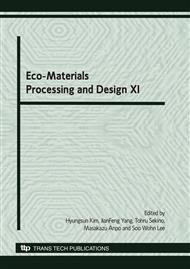p.420
p.424
p.428
p.432
p.436
p.440
p.444
p.448
p.452
Front End Bending in Plate Rolling Influenced by Asymmetrical Entrance Angle
Abstract:
Material rolled in heavy plate mills and roughing stands often bends upwards or downwards. This phenomenon can lead to poor shape, profile and quality of the product, as well as lower productivity. This paper focuses on the well- known bending due to the related asymmetrical entrance angle between the rolling stock and work roll which can easily cause asymmetrical shape factor in deformation zone. A model for calculating curvature quickly is deduced based on the condition of asymmetrical entrance angle. Results show that the front end bending can occur easily due to the asymmetrical entrance angle. Moreover, the bending inclination of large reduction, large radius of roll and thin rolling stock is greater than that of the reverse; the bending inclination of the entrance thickness of rolling stock is greater than that of the reduction, and the bending inclination of the reduction is greater than that of the radius of roll.
Info:
Periodical:
Pages:
436-439
Citation:
Online since:
July 2010
Authors:
Keywords:
Price:
Сopyright:
© 2010 Trans Tech Publications Ltd. All Rights Reserved
Share:
Citation:


